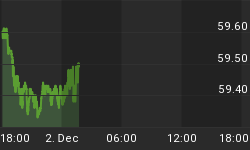
On Tuesday, November 30, 2010, the S&P 500 posted a lower open, a lower high and a lower close the 3rd day in a row (in opposite to the SPY which closed higher last Monday).
Beside the fact that we're entering into a favorable time frame for the markets (the first week of December, and December as well, see Seasonalities: The Market's Performance in December), three consecutive lower open, lower highs and lower closes are indicative that selling pressure is regularly exhausted for the short-term, and probabilities and odds are (significantly) tilt in favor of at least one higher close over the course of the the following sessions.
Table I below shows all occurrences and the SPY's historical performance (since 01/01/1990) over the course of the then following 1, 2, 3, 4 and 5 sessions, assumed one went long on close of a session where the S&P 500 has posted a lower open, a lower high and a lower close the 3rd day in a row in the past (the opening quotation for US major market indices is regularly a fake, but for statistical analysis - as a trigger only - it doesn't matter, contrary to performance analysis concerning the open, or for trading purposes like entry / exits).

(* no close below trigger day's close during period under review)
It is interesting to note that
- ... the SPY closed higher on the then following session (like on Wednesday, December 1) on 2 out of every 3 occurrences (or 65.38% of the time) ;
- ... the SPY closed above the trigger day's close 1 or 2 sessions later on 3 out of every 4 occurrences (or 73.08% of the time) ;
- ... the SPY posted at least one higher close above the trigger day's close over the course of the then following 4 (and 5) sessions on 24 out of 26 occurrences (or 92.31% of the time) ;
- ... the SPY never looked back and did not post a single close below the trigger day's close over the course of the then following 5 sessions on 12 out of 26 occurrences (or almost 50% of the time);
- ... downside potential over the course of the then following 5 sessions was regularly limited ; the SPY closed lower -1.0% (or worse) 5 sessions later on only 2 occurrences, but higher +1.0% (or better) on 14 occurrences.
Conclusions:
From a statistical and historical point of view, after posting 3 consecutive lower open, lower highs and lower closes (concerning the S&P 500) probabilities (winning percentage) and odds (expectancy) are tilt in favor of higher prices over the course of the next couple of sessions.
Successful trading,
















